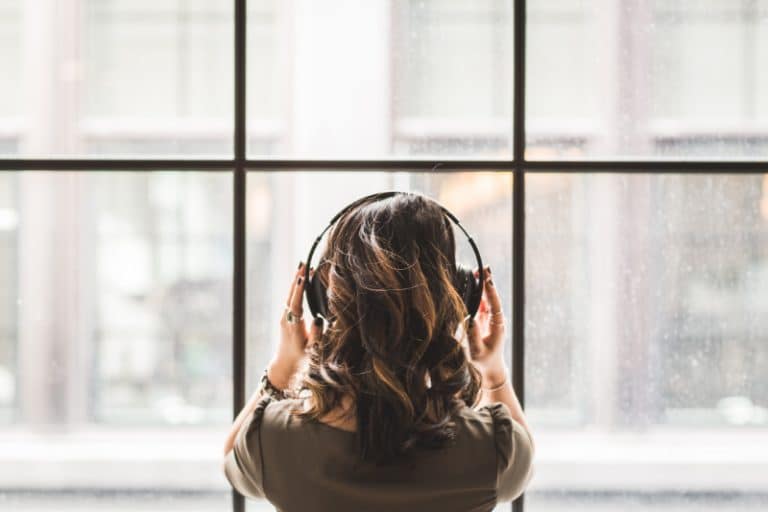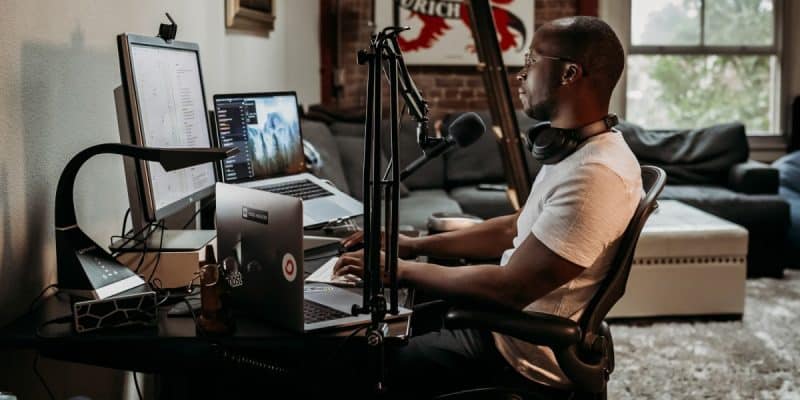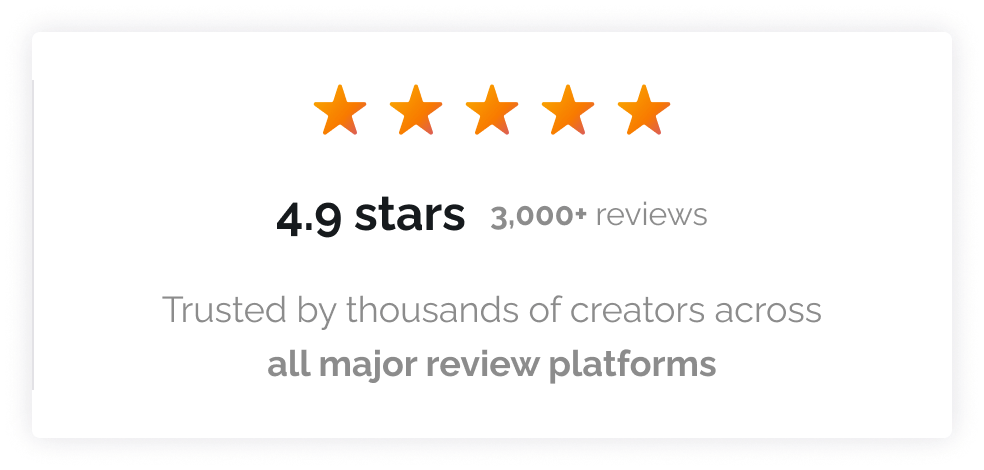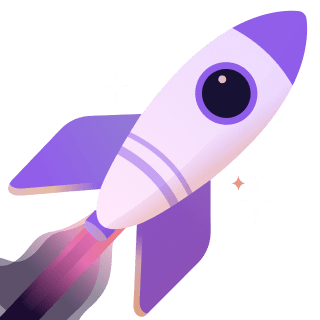We’re living in a time where new technology makes everything simpler — from programming your thermostat to starting a podcast.
And that means you need relatively little equipment to make a podcast. Of course, you can always get the top of the line of every-single-thing — and make good use of it. But you can also start out with just the basics.
Here’s the equipment you’ll need to start a podcast:
- Microphone
- Headphones
- Editing Software
- Podcast Hosting Account
- Extras e.g. boom, pop filter, etc.
Optional Upgrades:
- Video equipment (for YouTube/visual content)
- Remote recording software
- Transcription tools (RSS.com includes transcripts for free)
- Additional audio processing tools (i.e. Descript/Adobe Podcast for automatic background sound removal)

A Microphone
Sure, you have a microphone built into your computer, and yes, it’s possible to record a podcast with this microphone. But audio quality is key in the podcast world. Your listeners simply won’t be patient with you if your sound is tinny, full of background noise, or otherwise compromised. This is one area you don’t want to skimp on.
Invest in a good microphone. (And luckily, there are several inexpensive options!) Your audience will thank you.
✨ Read our post on the best microphones for podcasting here.
For beginners, veteran podcaster and entrepreneur Matthew Passy recommends the Samson Q2U as an excellent starting microphone. As he explains, “It doesn’t pick up a lot of background noise… you can ensure that people really are on mic sounding crisp.”
He also recommends you avoid common microphone mistakes:
– Using AirPods or built-in laptop mics (these create harsh audio quality)
– Using omnidirectional mics that pick up too much room noise
– Positioning the microphone incorrectly
Whether you choose a USB or XLR microphone will depend on your budget and technical needs. He says, USB microphones are great for beginners, while XLR microphones offer more professional quality but require additional equipment.

Headphones
Good headphones are critical in the podcast recording process. They allow you to hear what’s being recorded so you can catch background noise as it’s happening and fix it, or adjust your position if you’re too muffled or distant.
They’re also important in Skype interviews and in the editing process. You can go top of the line, but there are also several inexpensive, quality headphone options out there.
✨ Check out our post on the best headphones for podcasting here.

Editing Software
So much of the success of your podcast will depend on how well you edit it. You’ll need to get rid of background noise, eliminate dead space, add your intro, and so much more. To help with editing, you’ll need quality podcast editing software.
There are several options available, and whether you’re a newbie or a tech-savvy individual, there’s something for everyone.
✨ Read our full post on the best editing software for podcasts.
Podcast Hosting Account
Get a podcast host so that you can simply upload your podcast and make it available to be heard. A good hosting company will make the tech easy on you, generate and update your podcast RSS feed for you, and create a website where your podcasts can live.
RSS.com offers comprehensive hosting features including:
- Automatic distribution to major platforms (Apple Podcasts, Spotify, Google Podcasts)
- Free automatic transcriptions in 14 languages
- Analytics to track your show’s performance
- PodViz technology for converting audio to video
- A free, customizable podcast website
- Podcast Power-Ups (aka Podcasting 2.0 tags) like chapters and soundbites for enhanced search engine visibility
Most importantly, choose a host that makes the technical aspects easy so you can focus on creating great content.
Video Podcasting Equipment
If you’re considering video podcasting or YouTube content, you’ll need additional equipment:
Essential Video Equipment:
- HD webcam or digital camera
- Good lighting (ring light or basic lighting kit)
- Clean, professional background or green screen
- Video editing software
Optional Video Upgrades:
- Multiple camera angles
- Professional lighting setup
- High-quality backdrop
- Teleprompter
Note: Video podcasting requires more setup time and editing work, but can significantly expand your reach. Many podcasting experts agree that video provides podcasters a new way to connect with listeners on another platform. Video helps you provide some visual flair to your shows that wouldn’t be possible with an audio only experience.
Extras
While not necessary, these extra pieces of equipment can make your podcast more professional sounding — as well as make the recording process easier on yourself.
Pop filter: A pop filter makes it so your Ps and Bs aren’t amplified when you speak into the microphone. You can also manage this problem by speaking into the side of the mic, but a pop filter reduces your worry and extra care on the issue.
Boom: A boom is nice to have because it will hold the mic for you. It helps with sound quality because it keeps the mic in one place the whole time. Plus, you won’t have to hold the microphone while you talk.
✨ Looking for more tips? Check out our complete guide on how to start a podcast!



